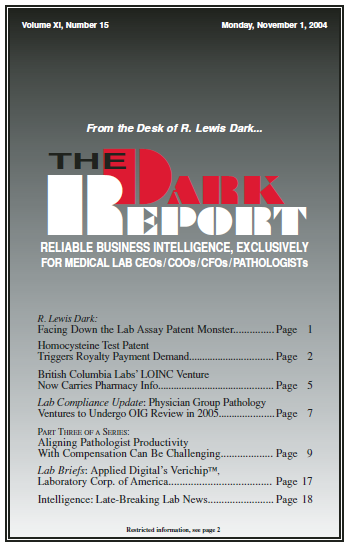IMPLANTABLE HUMAN IDENTIFICATION CHIP CLEARED BY FDA IT’S A DEVELOPMENT THAT INVOKES images from both George Orwell’s 1984 and Aldous Huxley’s Brave New World. An implantable radio frequency identification microchip (RFID) for human use was cleared by the U.S. Food and Drug Administration (FDA) for medical applications in the United States. On October 13, Applied …
Applied Digital’s Verichip™, Laboratory Corp. of America Read More »
To access this post, you must purchase The Dark Report.


